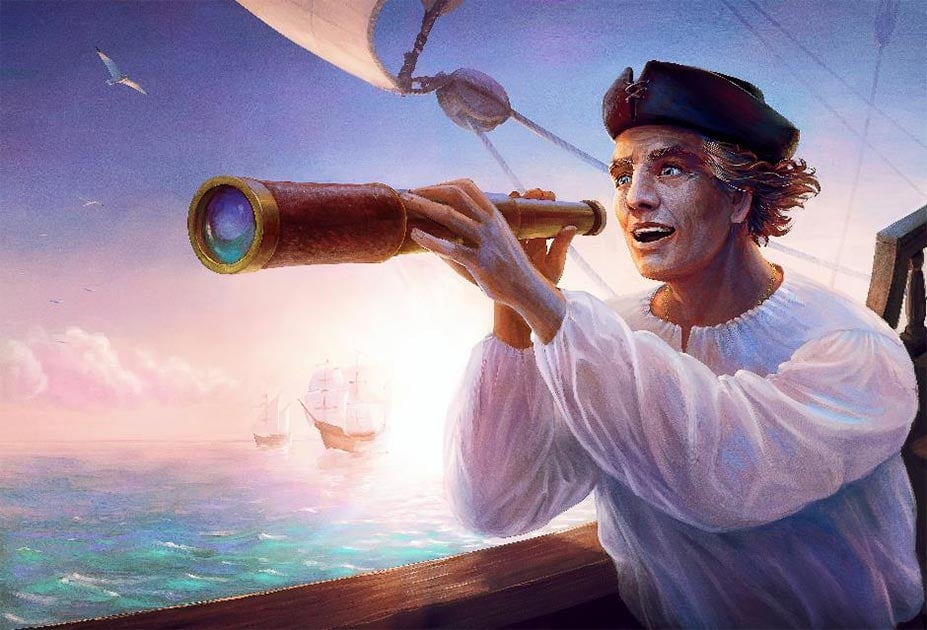The Age of Discovery: A New World Dawns
The Age of Discovery (also known as the Age of Exploration) refers to an exciting era in European history when a number of extensive overseas voyages took place. This period lasted roughly from the beginning of the 15th century until the middle of the 17th century and is most famously associated with Portugal and Spain, though many other regions were just as curious and set out on their own journeys of discovery around the world.
The Age of Discovery is also said to have ‘spread’ to Northern Europe and Russia, since these countries conducted their own explorations as well, though they set out much later than the Spanish and Portuguese. The Age of Discovery was brought about by a combination of several factors and had an impact not only on the history of Europe, but on the whole world.
Major Factors Behind the Age of Discovery
Trade was an important factor that led to the Age of Discovery. Around the beginning of the 13th century, the Mongol Empire was established by Genghis Khan. This was the largest contiguous land empire in history and stretched from China in the east to Central Europe in the west. Thanks to the Mongol Empire, trade flowed between the East and West via the Silk Road.
- Did This Ancient Explorer Make It to The Arctic In 325 BC?
- Remorseless Chronicles of Slaughter: Fatal First Contact Between Ancient Greece and the Tribes of India
- Kebokwe’s Cave: Where a Witch, A Legendary Scottish Explorer and a Tribal Chief Unite
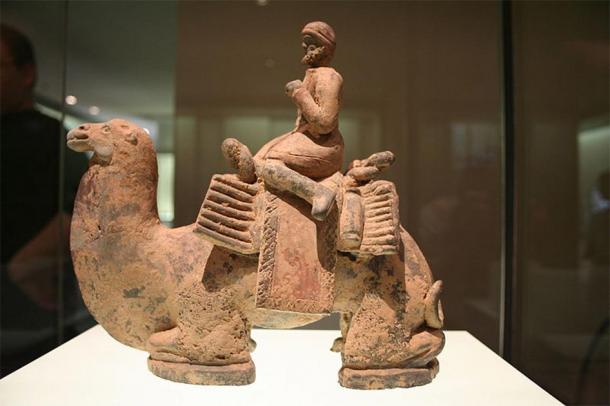
A foreigner depicted as a camel driver; Chinese terracotta sculpture from the Northern Wei Dynasty (386-534 AD). Cernuschi Museum, Paris, France. (Guillaume Jacquet/CC BY SA 3.0)
During the 14th century, the Mongol Empire was disintegrating, making travel along the Silk Road more dangerous. Although trade could be conducted via a maritime route there was a problem - the Mediterranean was dominated by the Venetians and the Red Sea, which gave access to the Indian Ocean, was blocked by the Ottoman Turks. Nations on the western end of the continent were certainly the biggest losers in such an arrangement.
Politics also contributed significantly to the Age of Discovery. In the Iberian Peninsula, the Reconquista had been going on since the 8th century AD and was nearing its end during the 15th century. Although the fall of Granada in 1492 marks the completion of the Reconquista, by the middle of the 13th century all of the Iberian Peninsula, apart from the Emirate of Granada, was in Christian hands.
The Reconquista gave rise to new European kingdoms, namely Portugal and Spain, whose rulers encouraged and funded the overseas voyages. In addition, the Age of Discovery was made possible by the development of ships that could travel across open waters.
Finally, the role of religion should not be overlooked. For instance, one of the motivations behind Portuguese exploration was the legend of Prester John. The Portuguese hoped to find this legendary king who was rumored to rule over a Christian kingdom in the East and form an alliance with him against the Muslims.
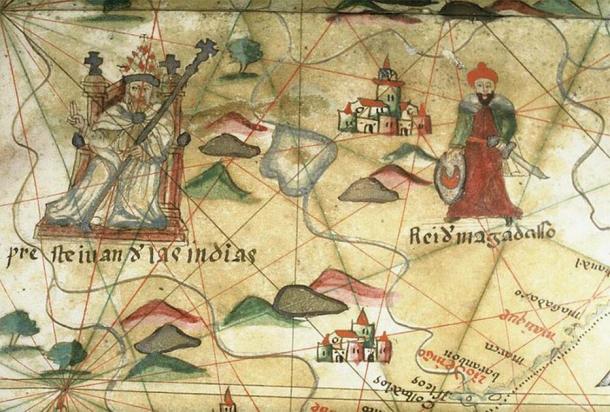
Prester John of the Indies. Close-up from a portolan chart. (The Bodleian Libraries, Oxford/CC BY 4.0)
Early Explorations
It should be mentioned briefly that travel and exploration were already happening in the centuries prior to the Age of Discovery. For instance, during the Middle Ages, Italian traders (the most famous being Marco Polo), as well as Christian missionaries (such as the Franciscan Odoric of Pordenone) were already traveling to the East. Other civilizations were also conducting their own travels.
The Maritime Silk Road, for instance, facilitated the movement of traders from China, Southeast Asia, India, and the Arabian Peninsula; while the famous Moroccan scholar and explorer, Ibn Battuta, traveled extensively during the 14th century - visiting not only much of the Islamic world, but also areas not under Muslim rule, including Central Asia, Southeast Asia, India, and China.
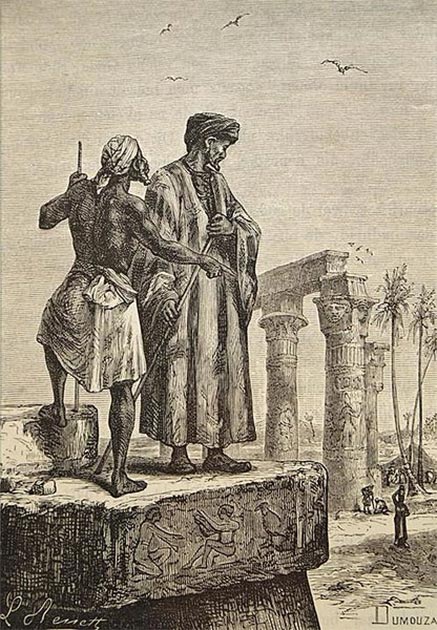
Ibn Battuta in Egypt. (Public Domain)
Voyages to Unknown Lands
One of the differences between European exploration during the Medieval period and the Age of Discovery is that during the latter the explorers began their journeys from the western end of the continent and were sailing into uncharted waters.
As mentioned earlier, the passage to the Indian Ocean through the Red Sea was blocked to the Europeans by the Turks. Therefore, the alternative route to the East for the Europeans was to go to the southern end of Africa before turning eastwards. At that point of time, the continent of Africa had not been fully explored, and it was not possible for the Europeans to travel inland, since North Africa was also under Muslim rule. Therefore, the Europeans were forced to sail along the western coast of Africa, seek its southern end, and then sail onwards to the East.
Major Finds by Portuguese Explorers
The Portuguese explorers are credited with making the first discoveries of this period. 1415 is regarded as the foundation of the Portuguese Colonial Empire, as the Portuguese crossed the Strait of Gibraltar and conquered the Moorish city of Ceuta in that year. The Portuguese discovered Madeira by chance.
In 1419, two Portuguese captains in the service of Prince Henry the Navigator were driven by a storm to an island which they named Porto Santo. In the following year, the captains returned to claim the island for Portugal and discovered a larger island (Madeira) to its southwest. In 1427, the Azores were discovered, and in the following decades the Portuguese continued their exploration along the west coast of Africa.
Cape Bojador (on the northern coast of Western Sahara) was crossed in 1434, while Senegal and Cape Verde were reached in 1445. In the following year, the Portuguese had made it as far south as what is currently Sierra Leone. Subsequently the Portuguese explored the Gulf of Guinea, and they discovered the Congo in 1482. Four years later, they were at Cape Cross, in modern day Namibia.
In 1488, Batolomeu Dias rounded the Cape of Good Hope. This was a significant event, as it meant that the Portuguese had finally reached the southern end of Africa and could now sail eastwards into the Indian Ocean. Nevertheless, it would take the Portuguese some time before they arrived in India. In 1498, Vasco da Gama landed in Calicut, in southwestern India, making him the first European to arrive in India by an oceanic route.

Vasco da Gama. (Public Domain)
For much of the 15th century the Portuguese were free to explore the oceans without any opposition from other European states. Spain (at that time the Crowns of Castile and Aragon), which would have been the main rivals of the Portuguese, was occupied with other matters during that century. As previously mentioned, the Reconquista only ended in 1492 after the fall of Granada. Additionally, the Spanish were more concerned at that time with the Mediterranean, as a number of areas outside Spain, including southern Italy, Sardinia, and Sicily, were under the Crown of Aragon.
The Spanish and Portuguese Compete to Reach the East
Nevertheless, the Spanish had no intention of losing out to the Portuguese and the two powers were locked in competition, each wanting to be the first to reach the East by sea. In January 1492, shortly after the conquest of Granada, a Genoese explorer by the name of Christopher Columbus finally succeeded in obtaining the sponsorship of Ferdinand II and Isabella I to voyage across the Atlantic. Columbus presented a radical proposal to the Spanish monarchs – he believed that it was possible to reach Asia by sailing westwards. Earlier on, Columbus had presented his project to the Portuguese king, John II, but was rejected. Columbus was rejected by Ferdinand and Isabella as well, at least twice, before securing their patronage in 1492.
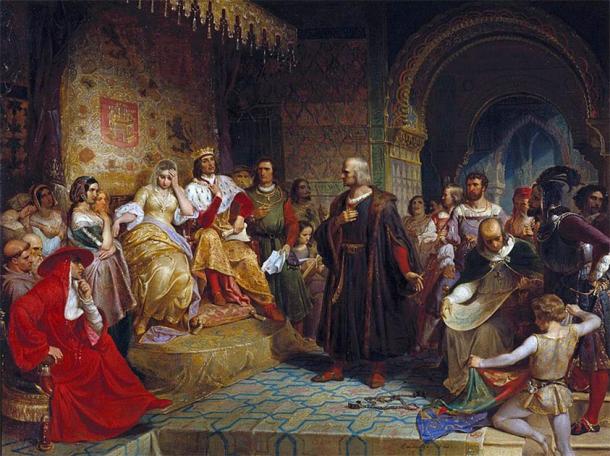
‘Columbus before the Queen’ (1843) by Emanuel Leutze. (Public Domain)
Contrary to popular belief, Columbus was not denied sponsorship because of the belief that the earth was flat, but rather because the experts at the Portuguese and Spanish courts believed that Columbus had grossly underestimated the distance between Europe and Asia. In this matter, the Portuguese and Spanish experts were right. Columbus, however, was extremely lucky, as there was a previously unknown land mass, i.e. the Americas, on the western route between Europe and Asia.
As a result, Columbus is remembered in the West as the man who discovered the New World. Had the Americas not existed, Columbus might have been relegated to a footnote in history and perhaps remembered as the ‘man who sailed west and never returned’. In the years following the discovery of the New World, Columbus maintained that he had found the western route to Asia, and may have genuinely held that belief, despite the increasing evidence that the land he had discovered was not Asia, but another continent.
Columbus aside, the discovery of lands to the west of Europe (be it Asia or another continent) escalated the conflict between Portugal and Spain. When Columbus returned from his first voyage in 1493 Spain claimed the new lands he ‘discovered.’ This was disputed by the Portuguese, who referred to the papal bulls of 1455, 1456, and 1479 to stake their claim on the new territories.
In response, the Spanish simply obtained new papal bulls to counter the old ones. Conveniently for them, the pope at the time was Alexander VI, a native of Valencia and a friend of the Spanish king. Therefore, papal bulls that favored the Spanish were easily obtained. One of these bulls, Inter caetera, stated that all lands to the west and south of a pole-to-pole line of 100 leagues west and south of any of the islands of the Azores or the Cape Verde islands would belong to Spain, apart from any lands ruled by Christians, which would be left untouched. Another bull, Dudum siquidem, entitled Extension of the Apostolic Grant and Donation of the Indies, gave Spain all the mainlands and islands of ‘India’ to Spain, even if they were situated east of the line.
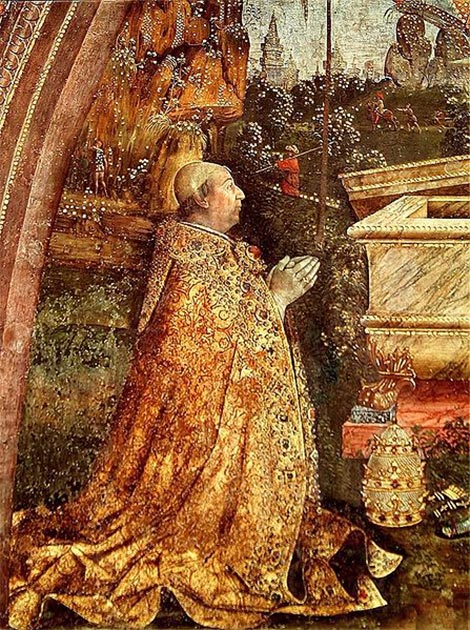
Pope Alexander VI. Detail from a fresco of the resurrection, painted in 1492 - 1495 by Pinturicchio. (Public Domain)
The Treaty of Tordesillas
The Portuguese were not at all pleased with this arrangement and they began negotiations with the Spanish. As a result, the Treaty of Tordesillas was signed on June 7, 1494, and later sanctioned by the pope, Julius II, in 1506. According to this treaty, the world was to be divided into two hemispheres between the Spanish and the Portuguese.
Although the Portuguese accepted the line set by the pope in the Inter caetera, they requested the Spanish have it moved 270 leagues to the west. Therefore, a north-south meridian 370 leagues west of the Cape Verde islands, roughly halfway between those islands and the ones newly discovered by Columbus, was established.
The treaty allowed Spain and Portugal to conquer any new lands they were the first to discover (except those ruled by Christians) - the former to the west, and the latter to the east, even if they passed each other on the other side of the globe. Consequently, the Spanish colonized much of South America in the decades that followed, while the Portuguese continued their exploration of the East. Incidentally, the coast of Brazil fell within the east half of the meridian, and therefore could be claimed by the Portuguese when it was discovered in 1500.
Other Explorers Join in
A problem with the Treaty of Tordesillas became apparent in 1512 when the Moluccas were discovered by the Portuguese. Although the islands were claimed by Portugal, a counterclaim was made by Spain in 1521, as they are said to be in the western hemisphere. A solution was reached in 1529 when the Treaty of Zaragoza was signed. Another line, the anti-meridian, was fixed at 297.5 leagues to the east of the Moluccas.
Although the two treaties pleased the Spanish and Portuguese, they excluded other European powers, who in turn did not recognize the validity of the texts. Thus, these treaties did not stop them from conducting their own voyages of exploration when the time came. The English and the Dutch who inhabited the northern part of Europe were entertaining the idea of a northern sea passage to the East.
- The Livingstone – Stanley Monument and The Famous Tale of Two Explorers in Africa
- Explorers That Found Ancient Lost City of the Monkey God Almost Lose Their Faces to Flesh-Eating Parasite
- Amerigo Vespucci: The Forgotten Explorer Who Named America
These explorers were much less successful than Columbus. Beginning in the middle of the 16th century, a number of voyages were launched in order to seek the Northeast Passage. The passage, however, eluded the explorers, and was only found during the second half of the 19th century.
Expeditions were also conducted to find the Northwest Passage, which linked Asia to America via the sea. Like its northeastern counterpart, the quest for the Northwest Passage began as early as the 16th century. Nevertheless, it was only at the beginning of the 20th century that the passage was found.
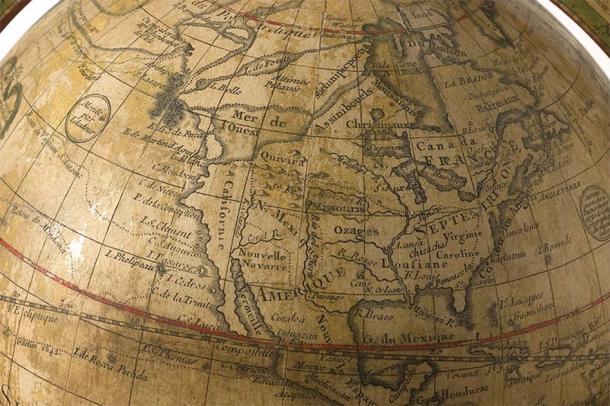
1765 globe by Guillaume Delisle, showing a fictional Northwest Passage. (Minnesota Historical Society/CC BY SA 3.0)
Finally, while the Age of Discovery is regarded as a glorious era by Europeans, it was a very different story for the peoples they encountered during their voyages. Many of these civilizations ended up being colonized by the Europeans, sometimes through brutal conquest. This is most visible in the Aztec and Inca Empires, both of which were highly advanced civilizations at the time of Spain’s arrival in the New World. Nevertheless, they were destroyed in a short period of time by a small number of Spanish conquistadors.
One of the factors that aided the conquistadors in their conquest of these civilizations was the spread of diseases, such as smallpox, which was common in Europe but unheard of in the Americas. These diseases decimated the indigenous peoples of the New World - causing labor shortages, sadness, and pain. In turn this had a hugely negative impact on another continent; African slaves were forcibly brought to the New World to work on plantations.
Top image: The Age of Discovery was a time when European explorers journeyed across the world. Source: oleskalashnik/Adobe Stock
By Wu Mingren
References
Briney, A., 2019. A Brief History of the Age of Exploration. [Online]
Available at: https://www.thoughtco.com/age-of-exploration-1435006
Flint, V. I., 2019. Christopher Columbus. [Online]
Available at: https://www.britannica.com/biography/Christopher-Columbus
McClure, J., 2018. Did the Age of Exploration bring more harm than good?. [Online]
Available at: https://www.historyextra.com/period/modern/age-of-exploration-bring-more...
Mitchell, J. B., 2020. The Age Of Discovery. [Online]
Available at: https://www.britannica.com/topic/European-exploration/The-Age-of-Discovery
National Geographic, 2020. Jun 7, 1494 CE: Treaty of Tordesillas. [Online]
Available at: https://www.nationalgeographic.org/thisday/jun7/treaty-tordesillas/
New World Encyclopedia, 2015. Treaty of Tordesillas. [Online]
Available at: https://www.newworldencyclopedia.org/entry/Treaty_of_Tordesillas
New World Encyclopedia, 2017. Christopher Columbus. [Online]
Available at: https://www.newworldencyclopedia.org/entry/Christopher_Columbus
New World Encyclopedia, 2018. Mongol Empire. [Online]
Available at: https://www.newworldencyclopedia.org/entry/Mongol_Empire
New World Encyclopedia, 2019. Portuguese Empire. [Online]
Available at: https://www.newworldencyclopedia.org/entry/Portuguese_Empire
New World Encyclopedia, 2019. Spanish Empire. [Online]
Available at: https://www.newworldencyclopedia.org/entry/Spanish_Empire
Pariona, A., 2017. What Was The Age Of Exploration Or The Age Of Discovery?. [Online]
Available at: https://www.worldatlas.com/articles/what-was-the-age-of-exploration-or-t...
The Mariners' Museum & Park, 2020. Age Of Discovery. [Online]
Available at: https://exploration.marinersmuseum.org/age-of-discovery/
Voorhies, J., 2002. Europe and the Age of Exploration. [Online]
Available at: https://www.metmuseum.org/toah/hd/expl/hd_expl.htm
www.historycrunch.com, 2020. Causes of the Age of Exploration. [Online]
Available at: https://www.historycrunch.com/causes-of-the-age-of-exploration.html#/


















